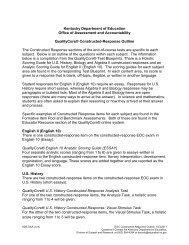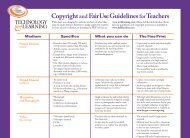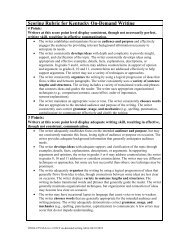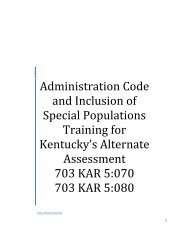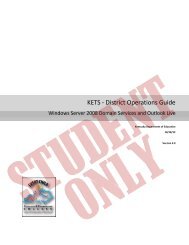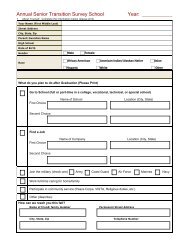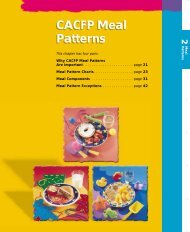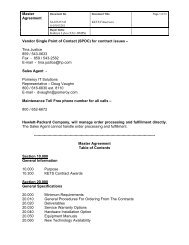Standards with Progressions grades K-HS v. 1.3 - Kentucky ...
Standards with Progressions grades K-HS v. 1.3 - Kentucky ...
Standards with Progressions grades K-HS v. 1.3 - Kentucky ...
- No tags were found...
You also want an ePaper? Increase the reach of your titles
YUMPU automatically turns print PDFs into web optimized ePapers that Google loves.
Geometric measurement: understand concepts of area and relate area to multiplication and to addition.<br />
3.MD.5: Recognize area as an attribute of plane figures and understand concepts of area measurement.<br />
a. A square <strong>with</strong> side length 1 unit, called “a unit square,” is said to have “one square unit” of area, and can be used to measure area.<br />
b. A plane figure which can be covered <strong>with</strong>out gaps or overlaps by n unit squares is said to have an area of n square units.<br />
Geometric measurement: understand concepts of area and relate area to multiplication and to addition.<br />
3.MD.5: Recognize area as an attribute of plane figures and understand concepts of area measurement.<br />
a. A square <strong>with</strong> side length 1 unit, called “a unit square,” is said to have “one square unit” of area, and can be used to measure area.<br />
b. A plane figure which can be covered <strong>with</strong>out gaps or overlaps by n unit squares is said to have an area of n square units.<br />
3.MD.6: Measure areas by counting unit squares (square cm, square m, square in, square ft, and improvised units).<br />
3.MD.7: Relate area to the operations of multiplication and addition.<br />
a. Find the area of a rectangle <strong>with</strong> whole-number side lengths by tiling it, and show that the area is the same as would be found by multiplying the side lengths.<br />
b. Multiply side lengths to find areas of rectangles <strong>with</strong> whole-number side lengths in the context of solving real world and mathematical problems, and represent whole-number products as rectangular areas in<br />
mathematical reasoning.<br />
c. Use tiling to show in a concrete case that the area of a rectangle <strong>with</strong> whole-number side lengths a and b + c is the sum of a × b and a × c. Use area models to represent the distributive property in<br />
mathematical reasoning.<br />
d. Recognize area as additive. Find areas of rectilinear figures by decomposing them into non-overlapping rectangles and adding the areas of the non-overlapping parts, applying this technique to solve real<br />
world problems.<br />
Geometric measurement: recognize perimeter as an attribute of plane figures and distinguish between linear and area measures.<br />
3.MD.8: Solve real world and mathematical problems involving perimeters of polygons, including finding the perimeter given the side lengths, finding an unknown side length, and exhibiting rectangles <strong>with</strong> the same<br />
perimeter and different areas or <strong>with</strong> the same area and different perimeters.<br />
Geometry<br />
Reason <strong>with</strong> shapes and their attributes.<br />
3.G.1: Understand that shapes in different categories (e.g., rhombuses, rectangles, and others) may share attributes (e.g., having four sides), and that the shared attributes can define a larger category (e.g.,<br />
quadrilaterals). Recognize rhombuses, rectangles, and squares as examples of quadrilaterals, and draw examples of quadrilaterals that do not belong to any of these subcategories.<br />
3.G.2: Partition shapes into parts <strong>with</strong> equal areas. Express the area of each part as a unit fraction of the whole. For example, partition a shape into 4 parts <strong>with</strong> equal area, and describe the area of each part as 1/4 of<br />
the area of the shape.<br />
<strong>Kentucky</strong> Department of Education<br />
25 | P a g e




